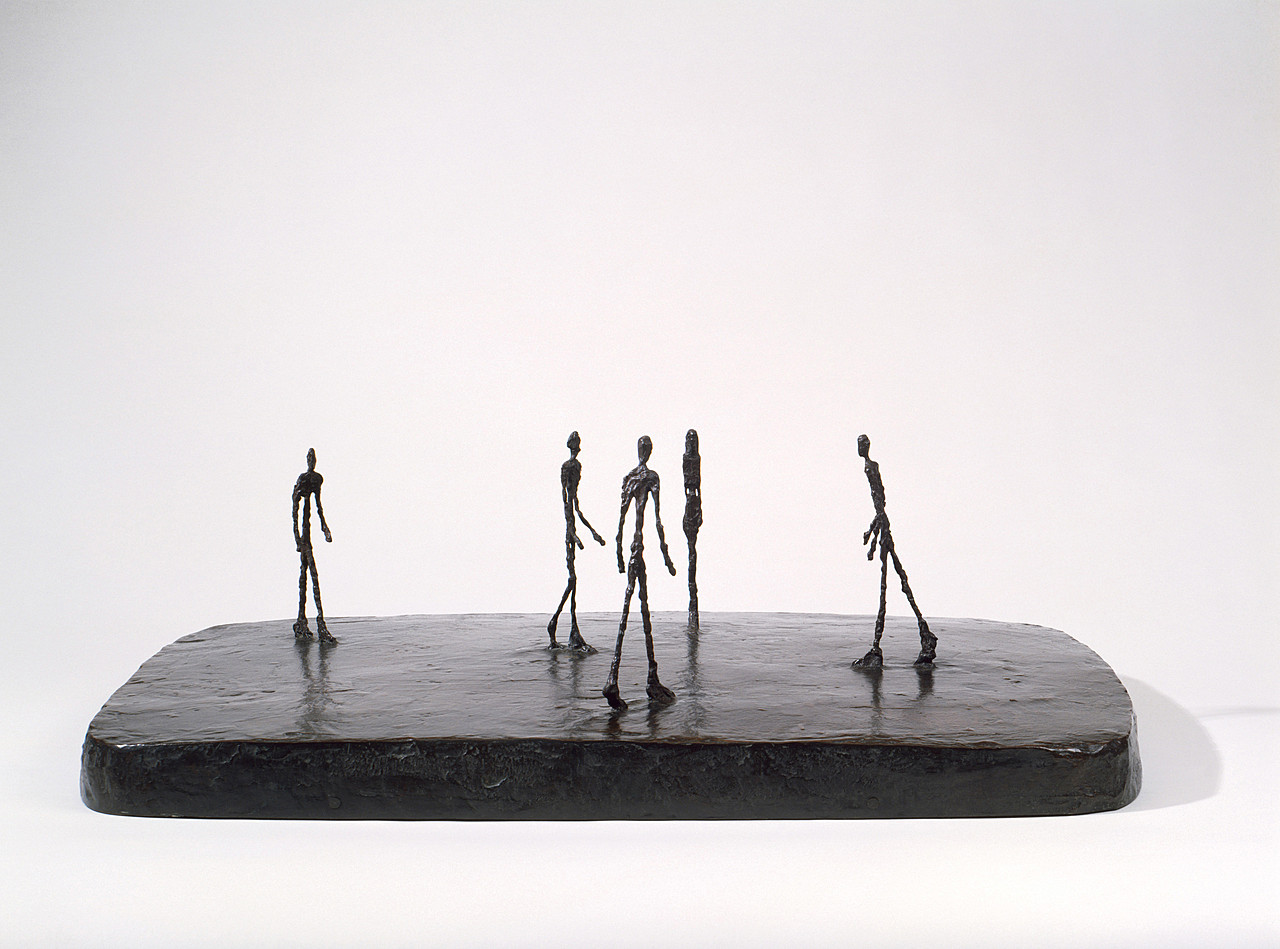
Alberto Giacometti, Piazza, 1947–48 (cast 1948–49). Bronze, 8 1/4 x 24 5/8 x 16 7/8 inches (21 x 62.5 x 42.8 cm)
In the late 1940s Alberto Giacometti produced attenuated thin figures not only of the life-size height of Standing Woman, but also on the miniature scale of the figures who inhabit his Piazza of 1947–48. Four men stride across a wide plaza, each moving toward the center, yet none apparently directed toward an encounter with one another. A single woman, whose stiff posture recalls Standing Woman, stands isolated and motionless near the center. The featureless figures exist independently within their haphazardly grouped unity, their multiple, nonconverging paths suggesting individual ambitions and absorptions.The flat bronze slab on which the figures stand serves both as base and as the plaza setting. Such a tabular format first appears in The Palace at 4 a.m., 1932–33, a highly theatrical work of Giacometti’s Surrealist period. Giacometti began placing individual figures on large bases as early as 1942, but only in 1948, in Three Men Walking, did a group of attenuated figures appear on a thin square bronze base that also suggests a city square.Giacometti’s scene derives from modern urban experience. He states: “In the street people astound and interest me more than any sculpture or painting. Every second the people stream together and go apart, then they approach each other to get closer to one another. They unceasingly form and re-form living compositions in unbelievable complexity. . . . It’s the totality of this life that I want to reproduce in everything I do. . . .”
There are five different casts of this work, and a somewhat larger version with the figures placed in slightly different positions exists in five casts as well. In all of these sculptures, an eye-level examination of the work alters the scale of miniaturization first perceived by the viewer. The vastness of the empty piazza and the anonymity of the figures are revealed by such closeup scrutiny.
